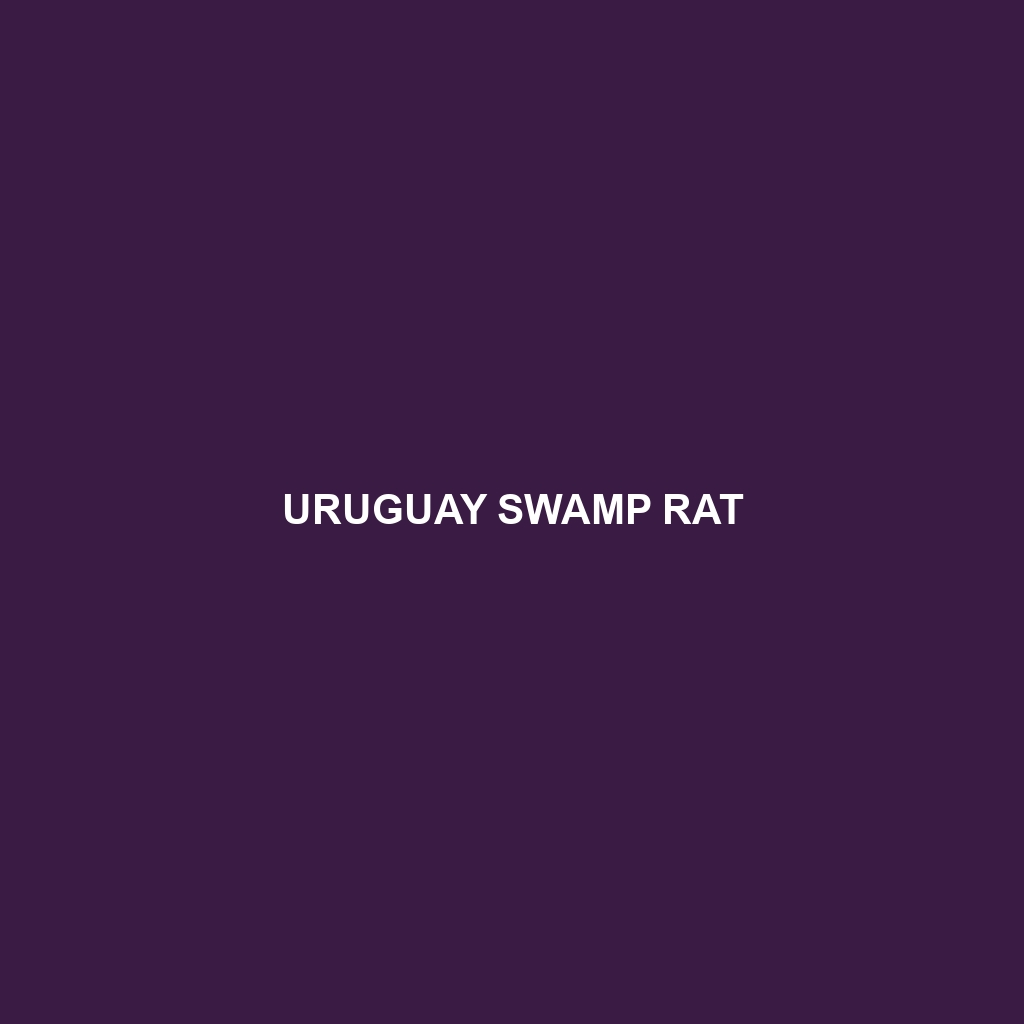-

Hairy-eared Cerrado Mouse
Discover the fascinating world of the Hairy-eared Cerrado Mouse, a unique rodent native to Brazil’s lush Cerrado biome. This medium-sized mouse, with its distinctive brown fur and large ears, plays a crucial role in its ecosystem by dispersing seeds and sustaining local flora. Learn about its nocturnal habits, diet, reproduction, and the conservation challenges it…
-

Red Hocicudo
Discover the captivating Red Hocicudo, a vulnerable medium-sized mammal native to the tropical savannas and grasslands of South America. With its striking reddish-brown coat and unique long snout, this nocturnal forager plays a crucial role in seed dispersal and maintaining ecosystem health. Learn about its habitat, diet, reproductive behaviors, and the pressing conservation efforts needed…
-

Argentinean Swamp Rat
Explore the fascinating world of the Argentinean Swamp Rat (Holochilus brasiliensis), a medium-sized rodent thriving in the lush wetlands of northeastern Argentina. Known for their impressive swimming skills and social behavior, these nocturnal creatures play a vital role in their ecosystem as herbivores and prey. Unfortunately, their vulnerable status highlights the urgent need for conservation…
-

Upper Yungas Inca Hocicudo
Discover the fascinating Upper Yungas Inca Hocicudo, a unique rodent found in Bolivia’s lush Upper Yungas ecoregion. With its rich brown fur, long snout, and nocturnal habits, this medium-sized species plays a crucial role in seed dispersal and soil health through its burrowing behavior. Learn about its distinctive characteristics, solitary lifestyle, and the conservation challenges…
-

Red Hocicudo
Discover the captivating Red Hocicudo, a vulnerable medium-sized mammal native to the tropical savannas and grasslands of South America. With its striking reddish-brown coat and unique long snout, this nocturnal forager plays a crucial role in seed dispersal and maintaining ecosystem health. Learn about its habitat, diet, reproductive behaviors, and the pressing conservation efforts needed…
-

Red Hocicudo
Discover the captivating Red Hocicudo, a vulnerable medium-sized mammal native to the tropical savannas and grasslands of South America. With its striking reddish-brown coat and unique long snout, this nocturnal forager plays a crucial role in seed dispersal and maintaining ecosystem health. Learn about its habitat, diet, reproductive behaviors, and the pressing conservation efforts needed…
-

Red Hocicudo
Discover the captivating Red Hocicudo, a vulnerable medium-sized mammal native to the tropical savannas and grasslands of South America. With its striking reddish-brown coat and unique long snout, this nocturnal forager plays a crucial role in seed dispersal and maintaining ecosystem health. Learn about its habitat, diet, reproductive behaviors, and the pressing conservation efforts needed…
-

Elfin Forest Hocicudo
Discover the elusive Elfin Forest Hocicudo, a unique rodent native to the elfin forests of eastern Brazil. This small but agile creature plays a vital role in its ecosystem through seed dispersal and burrowing, but faces vulnerabilities due to habitat loss. Learn about its fascinating behaviors, diet, and the conservation efforts needed to protect this…
-

Paramo Hocicudo
Discover the fascinating world of the Paramo Hocicudo (*Oxymycterus hispidus*), a vulnerable rodent native to the high-altitude paramo ecosystems of the Andes. This agile mammal thrives in moist grasslands, showcasing unique adaptations like its elongated snout and social behavior, making it a crucial player in maintaining ecological balance. Learn how habitat loss and climate change…
-

Paramo Hocicudo
Discover the fascinating world of the Paramo Hocicudo (*Oxymycterus hispidus*), a vulnerable rodent native to the high-altitude paramo ecosystems of the Andes. This agile mammal thrives in moist grasslands, showcasing unique adaptations like its elongated snout and social behavior, making it a crucial player in maintaining ecological balance. Learn how habitat loss and climate change…
Search
Popular Posts
-
Lygosoma corpulentum
Discover the Lygosoma corpulentum, or fat skink, a robust insectivorous lizard native to Southeast Asia’s moist tropical rainforests and varying habitats. With a stocky body, impressive camouflage, and remarkable adaptability, this ovoviviparous species plays a crucial role in maintaining ecological balance.
-
Lygosoma boehmei
Lygosoma boehmei is a slender, nocturnal insectivore found in humid tropical rainforests and savannas of Southeast Asia, exhibiting a smooth, camouflaging texture and remarkable burrowing abilities. This vulnerable species plays a crucial role in its ecosystem by controlling insect populations and serving as prey for larger predators.
-
Lygosoma bampfyldei
Lygosoma bampfyldei, commonly found in tropical and subtropical regions, is a moderately sized lizard measuring 15 to 25 cm, known for its elongated body and glossy, camouflage coloration. This insectivorous species thrives in moist habitats and plays a vital role in maintaining ecological balance by controlling insect populations.
Categories
Tags
animal adaptations (924) animal behavior (5000) animal reproduction (865) behavior (920) biodiversity (7853) conservation (1670) conservation efforts (1778) conservation status (5748) diet (2104) ecological balance (2087) ecological role (1952) ecosystem (1469) ecosystem role (2901) endangered species (2514) habitat (3280) habitat conservation (1136) Habitat Destruction (1421) habitat loss (3385) herpetology (870) insectivorous reptiles (948) IUCN Red List (1971) lizard behavior (881) lizard diet (944) lizard reproduction (1101) nocturnal animals (2754) nocturnal behavior (2592) nocturnal reptiles (1061) physical characteristics (2058) predator-prey relationships (927) reproduction (2890) reptile behavior (1037) reptile conservation (1348) reptile reproduction (1069) rodent species (1325) seed dispersal (2145) Seed Disperser (979) small mammals (1168) snake behavior (952) snake diet (1061) snake reproduction (1129) tropical forests (948) Vulnerable Species (4926) wildlife (2511) wildlife conservation (5355) wildlife protection (1008)


